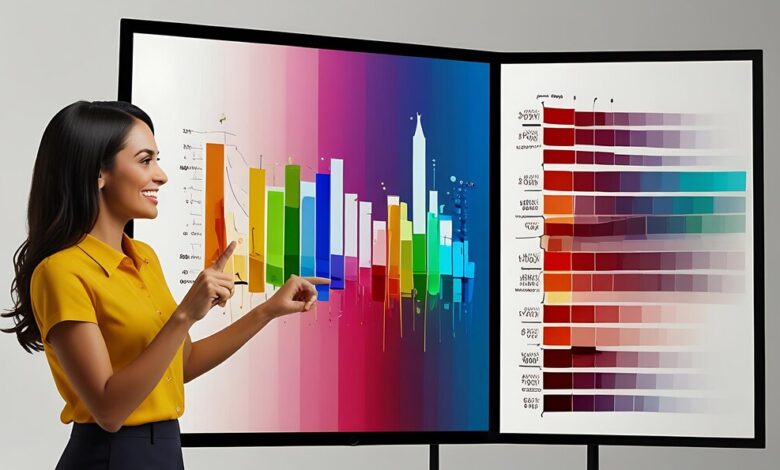Decoding the Screenplay of Numbers Why TV Graphs Matter for Your Viewing Choices

In today’s digital age, the way we consume television content is evolving rapidly. With countless shows and movies at our fingertips, making informed viewing choices can be a daunting task. Enter TV graphs—the unsung heroes behind your favorite TV shows and movies. These visual representations of data have a profound impact on what you watch and how you watch it. In this blog post, we’ll explore why TV graphs are crucial for TV enthusiasts, data analysts, and media consumers alike. You’ll discover how these graphs shape content creation, help you personalize your viewing experience, and even offer a glimpse into the future of television consumption.
Understanding TV Viewing Patterns
To truly appreciate the importance of TV graphs, it’s essential to understand the role of data in deciphering audience preferences. Data analytics have transformed the television industry by providing valuable insights into what viewers enjoy and how they consume content. By analyzing viewing patterns, networks and streaming platforms can identify trending genres, popular time slots, and preferred formats. This data-driven approach empowers content creators to tailor their offerings to meet audience demands.
TV Analytics play a pivotal role in understanding viewing patterns. They help networks gauge the success of a show or series by tracking metrics such as viewership, audience demographics, and engagement levels. By analyzing these numbers, media professionals can make informed decisions about which shows to renew, cancel, or promote. This data-driven content strategy ensures that viewers receive content that aligns with their preferences, leading to higher satisfaction and engagement.
In a world where data is king, TV graphs serve as the bridge between audience behavior and content creators’ decisions. These graphs provide insights into the ebb and flow of viewership, helping stakeholders optimize their programming strategies. By harnessing the power of TV analytics and viewing trends, producers and networks can create content that resonates with audiences on a deeper level.
Types of TV Graphs
TV graphs come in various forms, each offering unique insights into different aspects of television consumption. From traditional ratings to streaming data, these graphs provide a comprehensive view of how audiences engage with content. Understanding the different types of TV graphs is essential for anyone looking to make informed viewing choices.
One of the most well-known types of TV graphs is TV ratings. These graphs measure the number of viewers tuning in to a particular show or channel at a given time. TV ratings have long been a key metric for networks, influencing advertising revenue and programming decisions. A high rating often translates to increased interest from advertisers, making it a crucial factor in the success of a show.
Streaming data is another type of TV graph that has gained prominence in recent years. With the rise of platforms like Netflix, Hulu, and Disney+, streaming data provides insights into on-demand viewing habits. These graphs reveal which shows and movies are capturing the attention of audiences, enabling content creators to tailor their offerings accordingly. Streaming data also highlights binge-watching trends, helping networks understand viewer preferences for serialized content.
Social media engagement graphs offer a glimpse into how audiences interact with content beyond the screen. These graphs track metrics such as likes, shares, and comments, providing insights into the popularity and impact of a show on social platforms. Social media engagement data allows networks to gauge audience sentiment and make real-time adjustments to their programming strategies.
How TV Graphs Influence Content Creation
TV graphs play a significant role in shaping the content we consume by influencing how producers and networks make programming decisions. By analyzing data-driven insights, content creators can identify trends and preferences that inform their creative choices. This data-centric approach ensures that viewers receive content that resonates with their interests and keeps them engaged.
One way TV graphs influence content creation is by guiding the development of new shows and series. Producers use insights from TV analytics to identify emerging genres and themes that align with audience desires. By creating content that reflects current viewing trends, networks can capture the attention of a broader audience and increase viewership.
TV graphs also impact the scheduling and promotion of shows. Networks use ratings data to determine the best time slots for airing specific programs, maximizing their reach and potential. By strategically scheduling content based on viewership patterns, networks can optimize audience engagement and drive higher ratings.
Furthermore, TV graphs help content creators identify opportunities for cross-platform promotion. By analyzing social media engagement data, networks can identify shows with strong online followings and leverage their popularity to drive viewership. This data-driven marketing approach ensures that content reaches the right audience, leading to increased exposure and success.
The Impact on Personal Viewing Choices
While TV graphs play a crucial role in content creation, they also have a direct impact on individual viewing choices. By leveraging data-driven insights, viewers can curate their watching experience and discover content that aligns with their preferences. Understanding how TV graphs influence personal viewing choices empowers audiences to make informed decisions about what to watch.
TV graphs provide viewers with recommendations based on their viewing habits and preferences. Streaming platforms use algorithms to analyze data and suggest shows and movies that align with individual tastes. By leveraging viewing trends and analytics, these platforms offer personalized recommendations that enhance the overall viewing experience.
TV graphs also help viewers identify trending shows and must-watch series. By analyzing streaming data and social media engagement, audiences can stay up-to-date with the latest buzzworthy content. This data-driven approach ensures that viewers don’t miss out on popular shows and can actively participate in conversations about trending topics.
Additionally, TV graphs provide insights into the quality and reception of content. Ratings data and social media engagement graphs offer a glimpse into audience sentiment, helping viewers gauge the popularity and impact of a show. By considering these insights, audiences can make informed decisions about which shows to invest their time in.
Future of TV Graphs
The future of TV graphs is intertwined with advancements in technology and data analytics. As the television industry continues to evolve, TV graphs will play an even more significant role in shaping the way we consume content. Understanding the potential of TV graphs in the future offers valuable insights into the changing landscape of television.
Artificial intelligence and machine learning are poised to revolutionize TV graphs by providing more accurate and personalized recommendations. These technologies can analyze vast amounts of data in real-time, allowing for dynamic and tailored viewing suggestions. By leveraging AI-powered algorithms, streaming platforms can offer viewers an unparalleled level of personalization and engagement.
Data-driven content strategies will also become more prevalent in the future. Networks and producers will continue to rely on TV graphs to inform creative decisions, ensuring that content aligns with audience preferences. This data-centric approach will lead to a more diverse and engaging content landscape, catering to a broader range of interests and tastes.
Furthermore, the integration of virtual reality and augmented reality into television experiences will open new possibilities for TV graphs. These technologies will provide immersive and interactive viewing experiences, allowing audiences to engage with content in innovative ways. TV graphs will play a crucial role in analyzing user interactions and optimizing these experiences for maximum impact.
Conclusion
In conclusion, TV graphs are not just numbers on a screen; they are the guiding force behind the content we consume and the choices we make. By understanding the power of TV analytics, viewing trends, and data-driven content strategies, TV enthusiasts, data analysts, and media consumers can make informed decisions that enhance their viewing experiences. From shaping content creation to influencing personal viewing choices, TV graphs have a profound impact on the television industry. As technology continues to advance, the future of TV graphs holds even more exciting possibilities, offering audiences a richer and more personalized television experience.
For those eager to explore the world of TV graphs further, consider delving into articles, webinars, and courses that focus on data analytics in media. By staying informed, you can continue to make the most of your viewing choices in this dynamic and evolving landscape.



